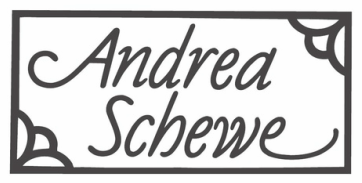I have learned from people writing in with comments. The big one being the "cool down" time required for fusible interfacing. I am now having success with fusible interfacing and I am currently on a project that absolutely requires it.
I, also, am having to research things when I start writing on a topic and want to give the most accurate information I can. And a couple of weeks ago I was directed to the "Costumer's Manifesto" website. Now this is a site I have used many times in the past. It is filled with lots and lots of great information and links for all periods of costumes. Also, tips for make-up and wigs, etc, etc.
It was founded by Tara Maginnis in 1996. Click on this for info about her.
But, within the last year it has been converted to a wiki like Wikipedia. This means anyone can edit or add information following the rules and guidelines set up on the site.
Here is the list of their basic categories. And I just noticed that when I cut and pasted this list here to my page ALL the subjects listed are hotlinks, so you can click on them and go straight to that page.
History by Era
Jewelry
Makeup
Men With Big Hair: The Costume Movie Site
Accessories
Masks and Makeup -- merge into makeup section
Military Uniforms
Religious Costumes
General Theatre Books and Videos
Galleries 19th Century Fans photographed by Tara Maginnis
In each category there are links to sites with supplies, lessons, costume groups and more.
Much of it is in a jumble and I think they would love to have people edit out the bad links. I ran into several.
Also, some categories are empty. I know there are many of you are so knowledgeable with LOADS of specialized information. So, if you have the time, perhaps you could dive in?
And here IS the Costumer's Manifesto. I really like this.
The Costumer's Manifesto: (A statement of Purpose and Ethics for Costumers)"I am a Costumer, I make clothes for imaginary people." ---Celestine Ranney, 1982
I. When I costume, I am not a fashion designer nor a clothing manufacturer, but a builder of character, concept, and physical movement.
II. I, above all, work with Actors: I help them build their character from without, even as they build it from within. I do not complain about the shape of their bodies. I create the shape we need, and/or build a visual representation of the character that suits the existing body. I am aware of their movement needs and I facilitate them.
III. I work under the guidance of Directors: I help them visually represent their conceptual ideas in physical form. I create clothes for the inhabitants of the world they envision.
IV. I am inspired by the words of Playwrights and Scriptwriters: I try to bring alive the script by transforming the words of the text into visual metaphors. Words, especially poetry in the text, need a visual equivalent that supports the mood of the script without distracting from it.
V. I collaborate with the other Designers, seeking to bring our collective vision together so it works in harmony. Costumes do not exist in a vacuum, but on a set, among properties and furniture, sound, and light, as part of a consistent visual representation of an invented world.
VI. Whether I am in the position of stitcher, cutter, dyer, crafts worker or designer, I remember that what I am doing is contributing to the greater whole of the production, and must be done with an aesthetic sense in keeping with the performance, not merely my own whims. Designers, therefore, need to communicate the shows design to all the other costumers involved in the process as clearly as possible, so that when design decisions are made at any level of the process, from buttons to butt padding, they reflect the needs of the show or film as a whole.
VII. I assist the Audience in understanding the story and characters. In performances where spectacle is required, I make the costumes astonish and entertain, but when the audience should be more aware of the other elements of the performance, I will try to make the costumes recede to the background, without personal vanity.
VIII. I study the history of fashion and dress, no matter what my position in a costume studio, so that I can better replicate the styles of clothing of the past when needed. However, I will remember to avoid mindlessly copying old fashion plates, but instead keep in mind the key elements of character and concept, and select or adapt those fashions to suit the individual production.
IX. I am aware that my work consists primarily of adapting and reinventing pre-existing styles to do a functional purpose: cover a body. I know then that what I build is not legally subject to copyright law, and I will not winge and whine if another designer is, in turn, inspired to reuse elements, even a majority of those elements, from one of my designs in their work. I will accept this as flattery if anyone does so.
X. Costuming is a fun profession, and I endeavor at all times to keep it that way by remembering the feelings of all my collaborators. At no time should actors feel their bodies are being criticized in a fitting, nor should a student, worker or volunteer be treated as slave labor, nor should a director or another designer be bullied into an unwanted design decision. A desire for excellence is good, but the desire should never be pursued to any degree that ignores labor law, common courtesy or civilized collaboration.


 RSS Feed
RSS Feed